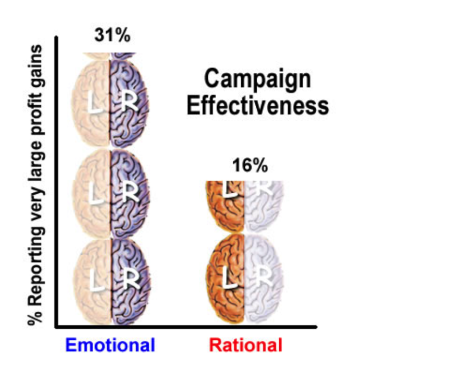The role of emotion in marketing

Posted by: David Hall
Watch the television ads by the big spenders—you’ll notice that almost all of them are geared to create an emotional impact. Effective marketing professionals understand that this is what works. Neuromarketing teaches us that emotional appeals work much better than logical appeals. (Neuromarketing is the science of applying studies of unconscious brain activity to marketing.)
Renowned marketing expert Roger Dooley, in his bestselling book, Brainfluence, states:
“The idea that ads that engage us emotionally work better than those that don’t should not be a big shock to anyone who’s spent time in advertising.” (Dooley, Brainfluence, p. 241)

A Personal Experience
Let me illustrate this with a personal experience. A number of years ago, my wife and I decided to sell our home and build a new one to accommodate our growing family. We found a realtor to list our home and shared with him a key concern we had. The carpeting in the home was worn and unattractive, and we asked him how we should handle that. The solution he suggested was to post a notice on the front door that our asking price included a carpeting allowance sufficient to re-carpet the entire house.

The house sold within a week.
The realtor’s approach was pure logic, and if you believe in the power of logic in marketing, it should have worked. But it didn’t. Studies show that marketing decisions are powerfully influenced by first impressions and, if you make a poor first impression, it is extremely difficult to overcome that. We flipped the approach, focusing on creating a strong first impression, and later making the logical appeal.
Applying Emotional Marketing to Website Design
Research at Carleton University in Ottawa determined that 50 milliseconds (one-twentieth of a second) was sufficient to create a first impression of a website. Other research shows that the first impression has strong sticking power in determining the visitor’s overall opinion of the site. This is all validated by our experience. For maximum conversion, the design of your website needs to be crafted to accurately and favorably brand your business. The first impression then created can be reinforced with logic to “close the sale.”

Emotions are a powerful catalyst for action! Thank you for sharing your example of how this worked in a real life setting!